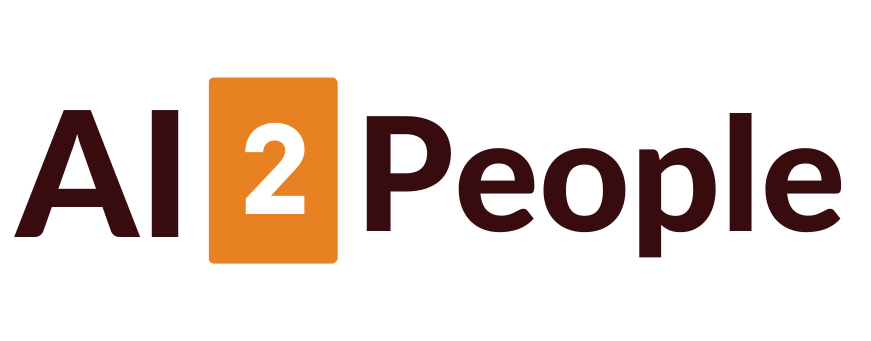
How Can we Use AI to Fight Air Pollution?
Air pollution is a persistent and grave issue that plagues the world today. Despite growing attention and efforts towards other environmental concerns such as global warming, biodiversity loss, soil degradation, and water resource management, air pollution continues to demand our attention and immediate action.
According to the World Health Organization, air pollution is responsible for premature deaths of between 3 to 8 million people annually. The air we breathe contains hazardous substances that can lead to respiratory problems, inflammatory diseases, and weakened immune systems. While various regulations have been introduced to curb air pollution and limit the concentration of air pollutants, measurements across
Europe still regularly exceed the safe threshold values for human health and food production. Megacities in Southern and Eastern Asia, Africa, and South America face even more significant challenges, with air pollution levels so high that they pose a severe threat to daily life.
To combat this issue, we must continue to monitor air pollution and develop effective tools for analyzing measurements and predicting air pollutant levels. In recent years, researchers have been investigating how AI can help fight air pollution. The technology’s ability to process and analyze vast amounts of data makes it a powerful tool for detecting and predicting air pollutant levels.
With the help of AI, we can create more accurate and reliable air quality monitoring systems that can identify the sources of pollution and predict future levels of pollution. These systems can provide early warning alerts to vulnerable communities, allowing them to take appropriate countermeasures.
Moreover, AI can assist in identifying the most effective pollution reduction strategies and evaluating their effectiveness. It can also help improve traffic flow management and optimize public transportation routes, reducing emissions in high traffic areas.
Read Also: How Can AI Help Achieve Clean Water?
Expanding Global Air Pollution Monitoring Network with AI and Low-Cost Sensors
Air pollution is a major problem affecting our planet today. It poses a significant threat to human health, the environment, and our planet’s climate. As we continue to grapple with this issue, data becomes a crucial aspect of building effective tools to monitor air pollution. Fortunately, we have air pollution monitoring networks around the world, including fixed stations and mobile platforms. However, the current data available is not sufficient to give us a comprehensive understanding of the problem.
Understanding the Air Pollution Monitoring Network
The Tropospheric Ozone Assessment Report (TOAR) database, hosted at Forschungszentrum Jülich in Germany, contains data from over 14,000 air pollution measurement sites globally. This data is supplemented by satellite information. This network may suggest that we have comprehensive data on air pollution, but this is far from the truth.
Limitations of Current Monitoring Network
Satellite instruments provide global coverage, but their precision is limited for measurements close to the Earth’s surface, where humans breathe the air. Furthermore, they do not measure frequently enough. The situation is even more dire in many parts of the world, where air quality monitoring stations are almost non-existent. Even in Europe, where the network is relatively dense, there are still large distances between monitoring sites.
Expanding the Monitoring Network with AI and Low-Cost Sensors
Artificial Intelligence (AI) can help fill the gaps in the current monitoring network. For instance, AI can interpret measurement signals obtained from modern low-cost sensor devices. These sensors can be used to fill monitoring gaps, especially when used alongside data from traditional monitoring stations. With the right approach, AI can help expand the global air pollution monitoring network.
Read Also: 19 Helpful Uses of AI at Home: Save Time & Money
Benefits of a Comprehensive Monitoring Network
A comprehensive monitoring network can provide real-time data, enable better forecasting, and promote more effective decision-making. With AI’s help, we can collect more accurate and precise data, which is vital for building effective solutions. A comprehensive monitoring network will enable us to track air pollution trends, understand the impact of our actions, and monitor the effectiveness of measures put in place to tackle air pollution.
How Machine Learning is Revolutionizing Environmental Science
Air pollution is a serious problem affecting our environment and public health. Interpretation and forecasting of air pollution require complex numerical models that simulate weather and air pollution chemistry using computer codes encompassing thousands of lines. However, with the advent of artificial intelligence (AI), these models are becoming more accessible and accurate.
The Challenges of Using AI for Air Pollution Analysis
Using AI for air pollution analysis poses several unique challenges that differ from those commonly seen in other AI applications. Machine learning algorithms were first tested in the context of local air quality forecasts in the 1990s when computational capacity was significantly less powerful than it is today. As a result, the machine learning results were marginally better than the classical statistical methods at the time.
Revolutionary Advances in Machine Learning for Air Pollution Forecasting
Since 2012, convolutional neural networks have led to breakthroughs in typical AI tasks such as image recognition, and atmospheric scientists have become interested in AI again. Several studies have appeared since 2018 that demonstrate how advanced machine learning techniques can generate high-quality air pollution forecasts locally.
Read Also: Machine Learning: A Beginner’s Guide
A Hybrid Approach to Air Pollution Forecasting
Machine learning models will soon provide alternative and cheaper solutions for air pollution forecasting over a region. The research conducted in the framework of the ERC project IntelliAQ indicates that such systems might work best in a hybrid approach where weather information is taken from traditional numerical simulations (i.e. weather forecasts) while air quality information is obtained from measurements.
AI and Air Pollution Management: Navigating the Opportunities and Risks
Air pollution has become a pressing issue in many parts of the world, and it’s crucial to find effective ways to manage it. One of the most promising developments in this field is the integration of AI into air pollution monitoring systems. With low-cost sensors and hybrid models, AI can provide much more detailed air pollution maps, allowing for more targeted mitigation measures. However, as with any new technology, there are both opportunities and risks associated with using AI in air pollution management.
Opportunities of AI in Air Pollution Management
AI-based pollution monitoring has the potential to revolutionize how we track and manage air pollution. By combining physiological sensors and medical information systems, it may be possible to directly measure inhaled pollutant doses. This can be particularly helpful for vulnerable individuals who need to plan their outdoor activities or avoid hazardous environments.
Moreover, AI-based air quality information is already being offered by several companies across Europe and other parts of the world. These systems can provide real-time data on air quality, enabling people to take appropriate measures to protect their health.
Another advantage of AI-based air pollution monitoring is its cost-effectiveness. Traditional air quality monitoring systems can be expensive to install and maintain. In contrast, low-cost sensors combined with AI can provide much more granular data at a fraction of the cost.
Risks of AI in Air Pollution Management
While the potential benefits of AI-based air pollution management are clear, there are also risks to be aware of. The quality of some AI-based systems is still questionable, and there is little information available on how well they work in practice. Blindly trusting such systems can lead to erroneous conclusions and potentially harmful actions.
Another concern is the potential for AI-based systems to exacerbate existing inequalities. For example, vulnerable populations may not have access to the technology needed to monitor air pollution levels in their area. Moreover, the data generated by AI-based systems may not always be transparent, making it difficult for individuals to understand how air quality is being monitored and managed.
Conclusion
AI has the potential to revolutionize how we monitor and manage air pollution, but it is crucial to navigate the opportunities and risks carefully. To maximize the benefits of AI-based air pollution monitoring, we must first understand its capabilities and limitations. We must also ensure that the technology is used in an ethical and transparent way, with a focus on promoting public health and minimizing harm. By doing so, we can make significant progress in reducing air pollution and improving the health and well-being of people around the world.






















